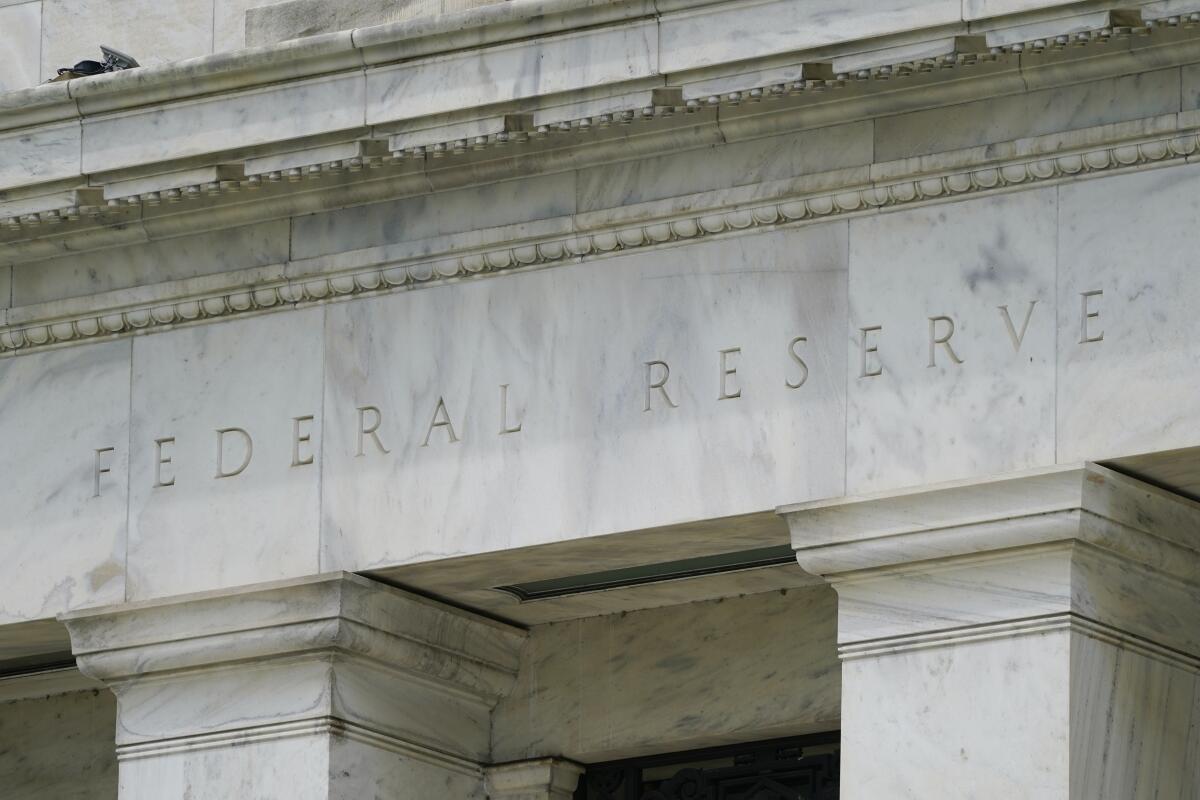Goodbye easy money

- Share via
The end of easy money is upon us.
Two years after the pandemic sent the global economy into a deep but short recession, central bankers are withdrawing their emergency support — and they’re moving faster than they or most investors had foreseen.
The U.S. Federal Reserve is preparing to raise interest rates in March, and Friday’s jobs report fueled speculation it may need to move aggressively. The Bank of England just delivered back-to-back increases, and some of its officials wanted to act even more forcefully. The Bank of Canada is set for liftoff next month. Even the European Central Bank may get in on the action later this year.
Rates are rising because policymakers judge that the global inflation shock now poses a bigger threat than further damage to growth from COVID-19. Some say it took them far too long to reach that conclusion. Others worry that the hawkish turn could slow recoveries without offering much relief from high prices, given that some of the surge is related to supply problems beyond the reach of monetary policy.
Still trying to figure out why anyone would pay thousands of dollars for a digital image that can be freely copied? Here’s a primer on NFTs.
There are a couple of outliers among the biggest economies.
The People’s Bank of China appears headed in the opposite direction. It’s likely to make credit cheaper as new virus outbreaks and a property slump cloud prospects for the world’s second-largest economy. And the Bank of Japan is expected to keep its policy unchanged this year, though traders are starting to wonder if it can hold the line.
In the emerging markets, many central banks started raising rates last year — and they’re not done yet.
Just last week, Brazil delivered a third consecutive 150-point increase, and the Czech Republic lifted its benchmark to the highest in the European Union. Russia, Poland, Mexico and Peru may extend tightening campaigns this week, though some think the Latin American cycle may be peaking.
Economists at JPMorgan Chase & Co. estimate that, by April, rates will have gone up in countries that together produce about half of the world’s gross domestic product, versus 5% now. They expect a global average interest rate of about 2% at the end of this year — roughly the pre-pandemic level.
All of this suggests the biggest tightening of monetary policy since the 1990s. And the shift isn’t confined to rates. Central banks are also dialing back the bond-buying programs they’ve used to restrain long-term borrowing costs. Bloomberg Economics calculates the combined balance sheet of the Group of Seven nations will peak by midyear.
“The tables have turned,” Bank of America Corp. economist Aditya Bhave wrote in a report Friday. “The surge in global inflation has pulled forward central bank hiking cycles and balance sheet shrinkage across the board.”
In the process, the pivot may end up having ended a pandemic boom in financial markets that was amplified by loose money.
The MSCI World Index of stocks is down about 5% this year. Bonds have plunged all over the world, sending yields higher.
What has forced the central-bank rethink is a wave of inflation. It’s driven by a disconnect between surging demand in post-lockdown economies and shortages in the supply of some key commodities, materials and goods — as well as workers.
This week, the U.S. is expected to report a 7.3% inflation rate for January, the highest since the early 1980s. Euro-area inflation just hit a record.
As recently as a few months ago, most officials didn’t expect the situation they’re now in. They spent much of 2021 arguing that price pressures would prove “transitory.” They welcomed the rapid rebound in employment and dismissed the inflation alarms that some commentators were already sounding.
Now, policymakers have decided that inflation has staying power — and that tolerating it risks setting off an upward spiral of prices and wages, which could prove impossible to halt without provoking a recession.
By acting now to cool things off a bit, they hope to deliver a fabled “soft landing” instead of a crash.
There are risks in both directions.
Inflation will probably continue to be fanned by declining unemployment and renewed demand for services as economies prove resilient to the Omicron variant of the coronavirus, according to JPMorgan economists led by Bruce Kasman. “It is hard for us to accept a juxtaposition of sustained low inflation with limited central bank action,” they also said in a report.
Some big-name economists and investors warn that central banks are still “behind the curve” and not fully grasping the scale of measures they’ll have to take.
But rapid rate increases now could be counterproductive if inflation does start fading as supply chains heal and commodity markets cool. That could leave policy settings suddenly looking too tight — something that happened to the European Central Bank a decade ago.
And if inflation does stick around, it might not be the kind that can be managed with monetary policy.
Strategists at BlackRock Inc. argue that prices are rising faster because of supply problems, and central bankers should learn to live with that. Bloomberg Economics calculates that if the Bank of England did want to bring inflation down to its 2% target this year, it would have to raise rates by enough to throw 1.2 million people out of work.
For now, the only way is up for global rates — but beyond that, the details are cloudy.
Forecasts diverge widely on how many Fed rate increases are coming this year. Barclays reckons on three increases, for example, and Bank of America expects seven. Also unclear is how big the moves will be, when they’ll be executed and where the benchmark rate will eventually end up.
Central bankers prefer it when their intentions are widely understood. Having made an abrupt policy shift, they need to figure out how to communicate their new plans to investors. Otherwise, markets could be in for a rough ride.
Bloomberg writers Zoe Schneeweiss and Jeremy Diamond contributed to this report.
More to Read
Inside the business of entertainment
The Wide Shot brings you news, analysis and insights on everything from streaming wars to production — and what it all means for the future.
You may occasionally receive promotional content from the Los Angeles Times.











